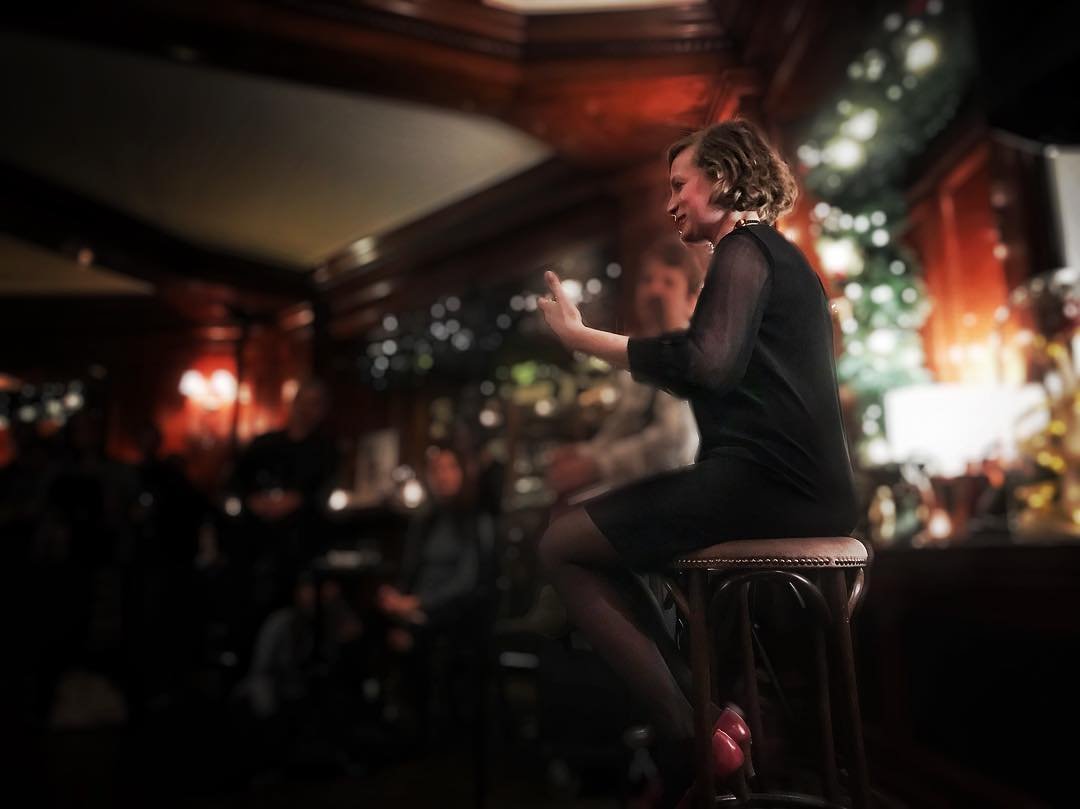As with past AWPs, I found yesterday that I could really only digest two panels per day. I attended three, but the third panel was somewhat lost on me, unfortunately. This morning, I took in another informative session, however!
Behind the Curtain: An Insider's Look at Four Top Literary Journals
Panelists: Carolyn Kuebler, Oscar Villalon, Patrick Ryan, Julia Brown; Moderator: Matthew Landsburgh
I've been interested in the ins-and-outs of literary magazines (mostly as a writer and reader but occasionally as an editor) for a long time now, so I could not resist this panel.
Landsburgh asked each panelist to provide an overview of their journal, speak to the kinds of work they publish in print and online, speak to their process of selecting work, and also what is an easy rejection versus what catches their attention for potential publication.
Brown, a fiction editor at AGNI, based at Boston University, said that next year will be 50th anniversary of the journal. They publish 250 pages of fiction, nonfiction, poetry, and art twice a year, and AGNI 94 includes a Future of Translation portfolio representing 21 languages. They publish a similar variety of things on their blog but also do Q & As, more reviews, and graphic novel excerpts. They receive an astounding 21,000 submissions a year across genres, around 8,000 of which are for fiction, so are constantly reading and passing around submissions that are whittled down to 6-8 stories per issue. Brown likes to read one third of a piece; within the first few pages, she says, "you can tell if it is something you want to pass on to others or not." But also: “sometimes there’s a story like a thorn that isn’t to your taste but there’s something about it that makes you want to pass it on." Brown loves when she is being led through a story and the sentences are like bread crumbs--it feels exciting and dangerous. When there’s a honed sensibility in the language, “it’s evident from sentence one”
Villalon is the managing editor at ZZYZYVA, a San Francisco-based journal with no institutional affiliation, publishing poetry, fiction, nonfiction, interviews, and art three times per year. In addition to online classes, they do 27 events per year, which include festivals, conferences, and interviews at bookstores with contributors who have a new book, which sounds like a really nice way to build community. Villalon also noted that online publication is paid the same as print. They do not take online submissions, however, and they do not use readers— interns log submissions and do a first read mostly for their own benefit, making a maybe/maybe not pile but it’s for them to learn about common mistakes and what works well in a submission. Editors look at everything. Submissions with cliches and clunky sentences are a quick rejection. They are looking for a believable voice, conviction, something that sounds true, that it’s not a writing exercise or thought experiment but something meaningful.
Ryan, the editor in chief of One Story, also a magazine with no affiliation, said that next year is their 20th anniversary. They publish one short story per month in chapbook format have published 284 different writers so far, half of which it is their first publication. They receive 10-12,000 submissions per year, close 2 months a year to catch up. A volunteer team of 12-15 vetted, trained readers commit to reading 15 complete submissions per week and they must submit a “best” submission of the week (I love this requirement); an assistant editor reads the best ofs, then sends them to Ryan, who starts all of them and they work together to winnow down what to read next. Red flags include confusion and obscurity, a mistake made by a lot of emerging writers; no sense of urgency by page two, no sense that the story is going anywhere. But if a colleague says to read it, he reads the whole submission.
Kuebler, the editor of New England Review, which is based at Middlebury College, noted that they publish short short fiction to novellas, poetry, essays (critical, personal, lyric, travel), dramatic writing, and translations in all genres, but they do not publish reviews or art. Occasionally they do an emerging writers issue (e.g. writers who have not yet published a book). They have a podcast in which theater students at Middlebury perform published work which sounds lovely! A volunteer team of 20 readers (some recent grads, some retirees) read 10,000 submissions a year. The editors get to know the readers well before the readers can be quite brief in their comments on Submittable, where much of the conversation takes place. The editors will read the readers' comments and the submissions and then decide whether to advance story to Kuebler who “is the keeper of the big picture” in terms of what’s been published recently and what will be in future issues. She loves to get a submission where she wonders “how’s this going to work?” yet the piece feels authoritative.
The panel ended with the all-too-important urging of writers to subscribe to one or two journals. If every writer did this, it would create significant support for the literary ecosystem. So please do so if you don't! Happy subscribing, reading, and submitting!

 The
The  My story "More Like Home Than Home" is in the
My story "More Like Home Than Home" is in the